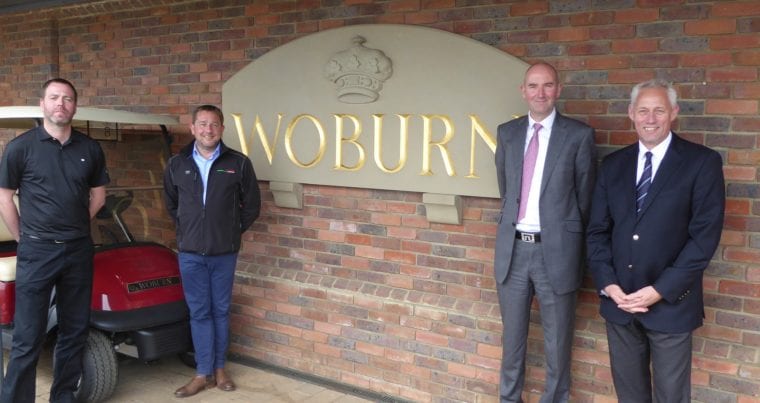Probably you have already heard about that Woburn Golf Club renewed its contract with Club Car. The golf club has signed an extension to its current contract with the Official Supplier of The European Tour until 2020. The extended lease deal, which originated in 2005, sees Club Car supply 50 electric-powered, emission-free, Precedent i2 vehicles, which will be used by golfers across the venue’s three world-renowned courses, Duke’s, Duchess and Marquess.
The fleet of Precedent i2 golf cars supplied to Woburn Golf Club boast an array of cutting-edge features, including advanced battery technology that enables a minimum of two rounds per charge, as well as the efficient ERIC charging system, designed to help significantly reduce charging costs.
Jason O’Malley, Managing Director of Woburn Golf Club said: “The service and back-up care we have received from Club Car, as well as the whole team at its official distributor, Oliver Landpower, has been absolutely first-class throughout our relationship.”

Why is customer service no more a cost center?
Customer service and customer experience are key differentiators not just among golf clubs, but also in the product categories of golf carts and utility vehicles. Today marketing success means developing customer-centric experience. This is why customer service quality has got a great impact on brand loyalty.
For the same reason, I recommend not to think about customer service as a cost center.
As our customers are becoming more and more empowered their expectations are growing. Services are required to be delivered quicker and personalized. Ideally, you should respond within 24 hours to their questions and complaints. The faster you respond to your customers and give them a frictionless service (e.g. customers don’t have to repeat their information) they will more likely to be satisfied.
That is why, I see a growth of self-services like virtual agents, web and mobile self-services, communities, and chatbots. In general, they serve as the first point of contact with companies.
Microsoft’s 2016 State of Global Customer Service Survey found that:
- 55% of all customer interactions started online and more than 25% started on mobile;
- “Live chat” is the 3rd most widely used communication channel in the US and in the UK, while in Germany only in the 6th place (the global average is: 5th place).
I would also think about how to use field service technologies as field service is becoming the face of your company. These technologies can contribute a lot to a quicker problem-solving. If done correctly, field service technologies can empower our customers to control the service experience by engaging with the technicians on their timetables and terms. They can generate differentiated customer experience by equipping technicians with the right customer information, parts, and knowledge to get the job done in one visit.
Let’s be wise and utilize analytics to have a smarter customer service.
